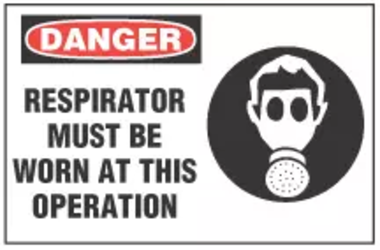
Respirators
According to OSHA 1910.134, Personal Protective Equipment, when engineering controls are neither feasible, available nor effective in preventing the breathing of harmful dusts, fumes, gases, vapors, sprays, etc., then appropriate respirators must be worn. The regulation goes on to say that the employer must provide each employee with respirators that are suitable and applicable for the purpose intended. There are respirators for virtually every type of operation. For example there are Air-Purifying -Atmosphere-Supplying; Escape Only Respirators to name just a few.
Wearing a respirator does not automatically mean that an employee is completely safe from the atmospheric conditions he or she is working in. The maximum use concentration (MUC) is determined by multiplying the assigned protection factor specified for a respirator by the required OSHA permissible exposure limit.
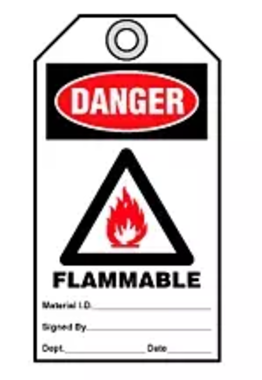
Fire Extinguisher Signs
Fire Extinguisher Signs
The OSHA Fire Protection regulation, 1910.157 states that “The employer shall provide portable fire extinguishers and shall mount, locate and identify them so that they are readily accessible to employees without subjecting the employees to possible injury.” In addition “Portable fire extinguishers shall be provided for employee use and selected and distributed based on the classes of anticipated workplace fires and on the size and degree of hazard which would affect their use.
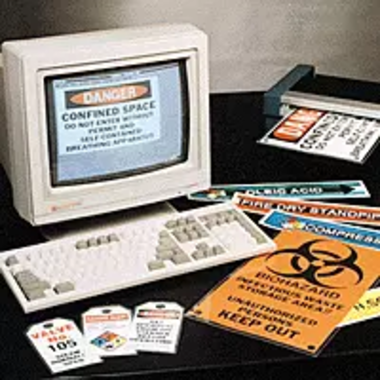
Q-Municator Signs: Creating Safety Signs from Your Computer
Spotting a
safety sign is hard to miss. They are practically everywhere you see them. They can be
found under the sink, on appliances and on the road. The main purpose of a
safety sign is to warn the viewer of a hazard or potential danger. You are likely to see several dozen different types of
safety signs along roads and highways when traveling. Most safety signs are symbol based, therefore
allowing for rapid recognition when driving or reading quickly.
continue reading
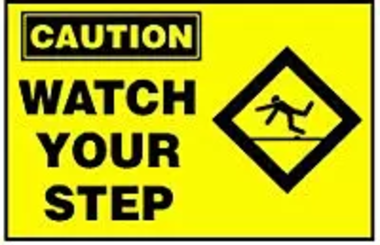
Personal Safety Signs can Prevent Accidents at Workplaces
In this modern
age of health and safety awareness, a lot of people are skeptical about most
health and safety rules. Some people may see it as overkill, bureaucracy gone mad and a
pointless creation of jobs. But, these signs if properly installed and observed
will prevent countless accidents both at work and at home, and the proper
implementation of personal protective equipment rules will minimize the risk of
injury at work in a variety of environments.
continue reading
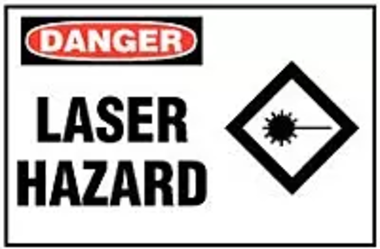
Radiation and Laser Safety
Lasers have
many applications these days. They are often used in scanners and detectors,
night vision optics, medical applications and industry. However, radiation
exposure from lasers can be a serious health risk and it
does exist in many items that we come in contact with on a regular basis, such
as microwave ovens and cellphones.
continue reading
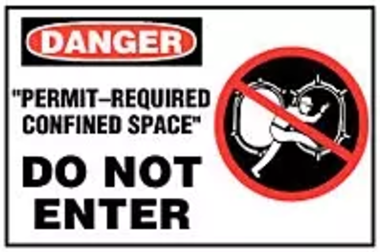
Safety Regulations for Restricted Areas and Confined Space
The OSHA Confined Space Regulation, CFR1910.146 is designed to prevent accidents to employees when working in a space where one has limited or restricted access for entry or exit and while in that area might meet up with liquids, gases or obstacles. Thus, a person entering a confined space must be fully trained in the hazards to be faced and must wear the appropriate protective clothing. The area is also constantly monitored for air quality. Before entering a confined space area, one has to receive a “Confined Space Permit.” To help the process along, a series of signs and tags have been created. They contain proper procedures to follow, Caution and Danger announcements as well as directions for those both entering the area or assisting in the operation.
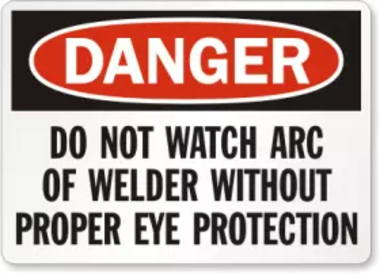
Welding Arc and Eye Protection
Welding can injure both the welder and others working nearby. Welding fumes, vapors, particulates and high intensity light all pose a threat to people that are exposed to them. Temporary or permanent damage to the eyes can result from welding depending on the length and type of exposure. Welding generates metal fumes, chemical gases and vapors. These chemicals can cause irritation of the outer layer of the eye and the cornea.
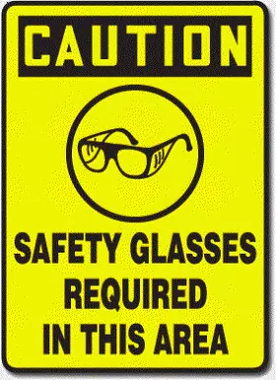
Safety Glasses
Thousands of people are yearly blinded from work-related eye injuries that could have been prevented with the proper selection and use of eye protection. Eye injuries alone cost more than $300 million per year in lost production time, medical expenses, and worker compensation. Eye and face protection is addressed in specific standards for the general industry, shipyard employment, long shoring, and the construction industry.
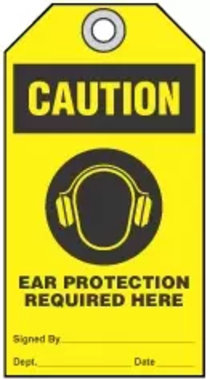
Ear Protection Safety Signs
The most guaranteed method of preventing occupational deafness is by reducing noise at the source by engineering methods. However, in certain workplace conditions, there is very little or nothing one can do to reduce noise at the source. In such workplaces, workers wear hearing protectors to reduce the amount of noise reaching the ears.
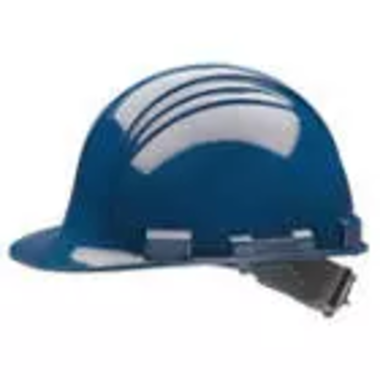
Danger: Do Not Enter This Area Unless You Are Wearing A Hard Hat
Hand shields or helmets provide eye protection by using an assembly of components such as a helmet shell. This helmet must be opaque to light and resistant to impact, heat and electricity. Outer cover plate made of polycarbonate plastic which protects from UV radiation, impact and scratches. This helmet also includes filter lens made of glass containing a filler which reduces the amount of light passing through to the eyes.
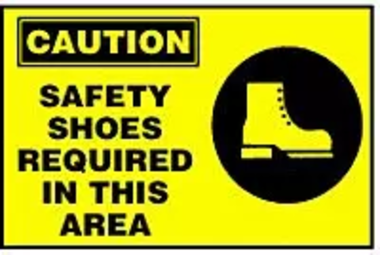
Danger: Respirator Must Be Worn At This Operation
Danger:
Respirator Must Be Worn At This Operation
Wearing a respiratory protection
device does not mean that you are safe. The atmosphere that surrounds you at
work still remains dangerous. The air that we breathe in is never "100%
clean". For example, your lungs can attacked by cooking smells, carpet
deodorizers, chlorine in bleach, cigarette smoke or dead skin cells from
animals in your own home. In your yard
or on the street, car exhaust, household and industrial smoke, smell of freshly
cut grass, tree resin, fungus dust, flower pollens and dust taken by wind, are
omnipresent. Moreover, some types of work generate substantial amounts of
atmospheric contaminants. For example, spraying with pesticides, washing with
solvents, grinding metal, transferring wheat on a feeder, painting with a spray
gun or arc welding belong to this group.
Safety Signs in the Food Industry
The modern democratic world is highly bureaucratic and
organized when it comes to safety sign
requirements in the commercial arena. It is virtually canonical for insurance companies
in developed countries to require the presence of industry-specific and/or
general safety signs in work areas as part of their insurance policies.
This is especially applicable to the food industry, which on
top of containing specific potential dangers to employees, additional care has
to be taken to avoid food contamination, which can harm customers and thus
result in a number of different lawsuits.
What are Safety Signs?
In simple terms, safety signs are signs that include a range of messages with the intent of keeping people from physical harm. Other signs are preventive in nature, instructing people for or against taking certain actions. A third type of safety signs are those categorized as informational and simply alert people to certain information, such as the whereabouts of a fire extinguisher. These signs are found in a range of different locations: factories, offices, educational institutions, and just about in any place where large amounts of people congregate.